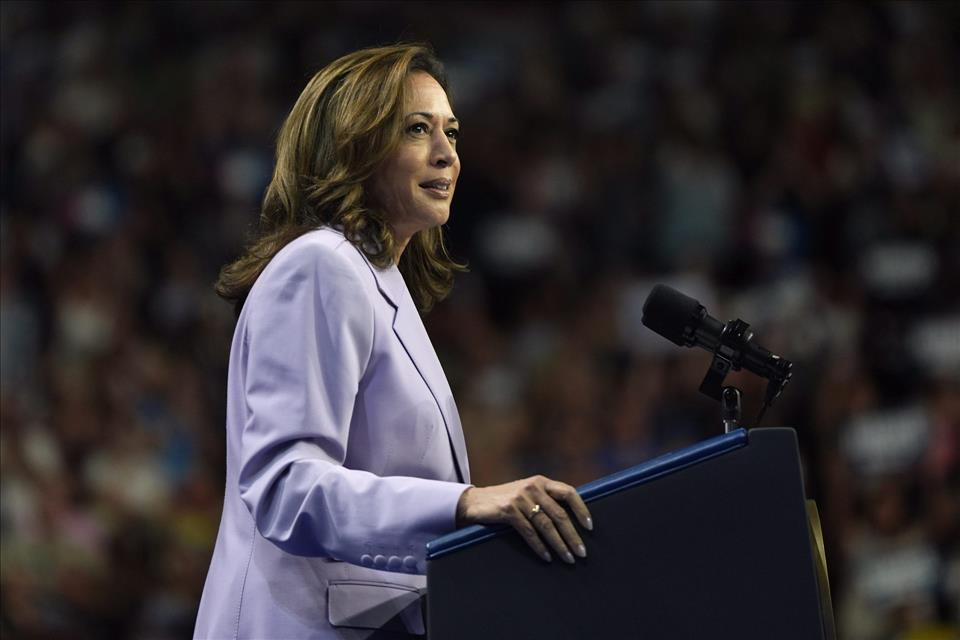
'Happened To Turn Black': How Donald Trump Evoked A History Of White Authorities Using Their Power To Define Race
“She was Indian all the way, and then all of a sudden she made a turn [...] she became a Black person,” Trump said, prompting surprised laughter from the audience. When asked about Trump's comments, Republican vice presidential nominee J.D. Vance demurred, saying Harris is a“fundamentally fake person”.
Trump's comments implied that Harris, who is the daughter of a Jamaican father and an Indian mother , is a racial impostor who adapted her racial identity to score political points with Black voters.
While Trump seemed to think he made a novel jab, he inadvertently invoked the long history of how racial classifications have been used to control the lives of people of colour in the United States.
Indeed, the power to police racial classifications was foundational to white supremacy, and the refusal to acknowledge bi- or multiracial identities is a legacy of this history.
Racial identity in the era of slaveryEarly laws defining race in the US focused on interracial sex and its relationship to slavery.
For example, a 1662 Virginia law seeking to resolve concerns about whether“children got by any Englishman upon a Negro woman should be slave or free” decreed that such children would follow“the condition of the mother”.
This meant children born to enslaved Black mothers and free English fathers would be enslaved. This also determined the child's race: only Black people could be enslaved .
After emancipation, more states adopted laws prohibiting interracial marriage, and these laws defined race for all other legal purposes .
In 1890, for example, delegates to the Mississippi constitutional convention forbade a white person from marrying“a negro or mulatto” (an archaic and offensive term for persons of mixed white and Black ancestry) or any person having“one eighth or more” blood quantum of African ancestry.
In other words, a person with seven white grandparents and one Black grandparent was Black, regardless of his or her skin colour – or how that person identified themselves.
Nonetheless, some people challenged these racial classifications.
Homer Plessy , for example, was a member of the free people of colour in New Orleans. These were people of mixed descent whose ancestors were not enslaved and who held a status in Louisiana society that was elevated above that of formerly enslaved Black people.
He was arrested in 1890 for boarding a whites-only train car. In its infamous 1896 decision upholding segregation laws, Plessy v Ferguson, the US Supreme Court brushed away claims that Plessy's heritage entitled him to special status. Justice Henry Billings Brown wrote :
In other words, Plessy's African ancestry made him“coloured”. The state need not accommodate any other identities.
Racial identity defined by lawAs immigration from Asia increased in the 19th century, many states also discriminated against people of Asian descent , reserving the full suite of civil and political rights for white people alone.
Central to segregation law was the concept that race was determined by others: policemen, judges, juries , county clerks and even bus drivers held the power to determine a person's race, not the person him or herself.
Other rights were also determined following this legal concept:
-
whether a person could register and vote
which school their child could attend
whom they could marry
where they could sit on a bus .
The power to determine a person's racial classification was therefore placed in the hands of authorities, almost always a white person. And this authority could define a person's place in society.
These laws made people of mixed ancestry invisible, even as they did not always avoid acknowledging them.
The US census counted“mulattoes” for many decades, even though such people were subject to the same discriminatory Jim Crow laws as other Black people.
It was not until 1960 that the census allowed individuals to choose their own racial identity. And the census did not offer Americans the option to identify as multiracial until 2000.
A rebuke to this historyAs segregation laws were repealed or declared invalid by a series of legislative and judicial acts in the 1960s, Americans finally had the power to publicly determine their own racial identities.
In its 1967 decision, Loving v Virginia , the Supreme Court declared laws prohibiting interracial marriage unconstitutional, leading to more intermarriages .
Mildred Loving and her husband Richard P Loving in a 1965 file photograph. AP
These legal transformations not only made it possible for interracial couples like Harris's parents to marry, but they also allowed the children of such unions to embrace and articulate openly their own sense of identity.
More than 33 million Americans now identify as bi- or multiracial – something that white supremacists long sought to deny to anyone.
How such individuals identify is not only their prerogative, it is also a rebuke to the long history of white people policing race in the service of white supremacy.
-
Slavery
Donald Trump
racial identity
Multiracial
Kamala Harris
Plessy v. Ferguson
World news

Legal Disclaimer:
MENAFN provides the
information “as is” without warranty of any kind. We do not accept
any responsibility or liability for the accuracy, content, images,
videos, licenses, completeness, legality, or reliability of the information
contained in this article. If you have any complaints or copyright
issues related to this article, kindly contact the provider above.
Most popular stories
Market Research

- CEA Industries ($BNC) Announces BNB Holdings Of 480,000 Tokens, And Total Crypto And Cash Holdings Of $663 Million
- Whale.Io Launches Battlepass Season 3, Featuring $77,000 In Crypto Casino Rewards
- Kucoin Appeals FINTRAC Decision, Reaffirms Commitment To Compliance
- Daytrading Publishes New Study Showing 70% Of Viral Finance Tiktoks Are Misleading
- Bitmex Launches Uptober Carnival Featuring A $1,000,000 Prize Pool
- PU Prime Launches Halloween Giveaway: Iphones, Watches & Cash Await




















Comments
No comment